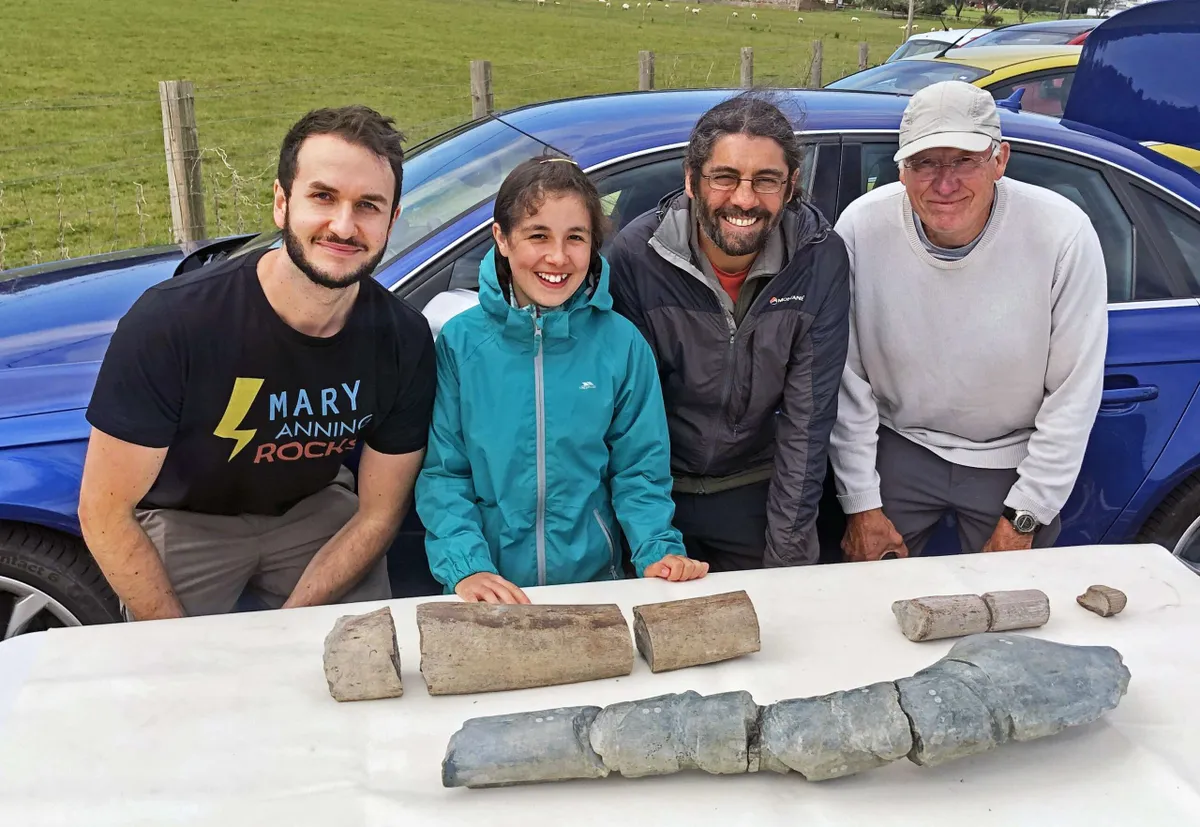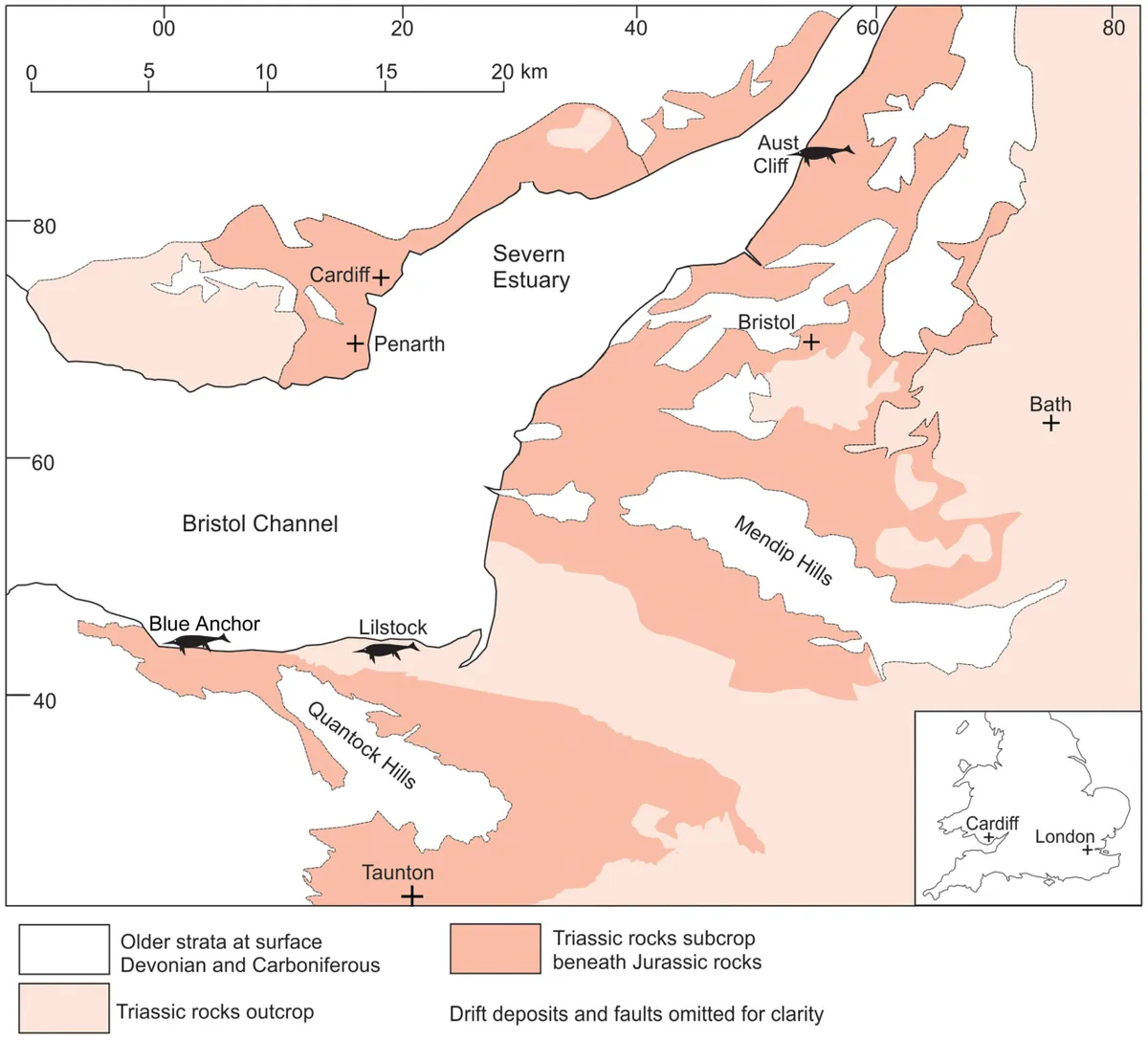In 2020, 11-year-old Ruby Reynolds and her father Justin discovered a large bone on the beach at Blue Anchor in Somerset. They suspected it to be part of a jawbone. Knowing they had stumbled across something truly special, they combed the beach for the missing pieces – and found them.
Now, scientists have confirmed that the fossilised remains belong to a new species of giant ichthyosaur, a type of prehistoric marine reptile that lived in our oceans more than 200 million years ago.
Thought to have been more than 25 metres long, the species may have been the largest marine reptile to have ever lived.

Discovering a giant
The first pieces of the jawbone were found in May 2020 by 11-year-old Ruby Reynolds and her father Justin as they were hunting for fossils on the Somerset coast.
“When Ruby and I found the first two pieces," says Justin, "we were very excited as we realised that this was something important and unusual."
Sure they had discovered something special, Justin contacted palaeontologist and ichthyosaur expert Dr Dean Lomax.
Dr Lomax immediately notified Paul de la Salle, a seasoned fossil collector who, a few years earlier, had also found a giant jawbone, this time at Lilstock a few miles up the coast.
“I was amazed by the find. In 2018, my team (including Paul de la Salle) studied and described Paul’s giant jawbone and we had hoped that one day another would come to light," says Dr Lomax.
"This new specimen is more complete, better preserved, and shows that we now have two of these giant bones (called a surangular) that have a unique shape and structure. I became very excited, to say the least.”
Dr Lomax and de la Salle made their way to the beach at Blue Anchor, where they joined Justin and Ruby to hunt for more remains of the ichthyosaur.
The final piece of bone was recovered in October 2022.

'Giant fish lizard of the Severn'
Having gathered all the pieces of the jawbone, the research team, led by Dr Lomax, started to analyse the find.
They discovered that the jawbone belonged to a new species of giant ichthyosaur that would have been more than 25m long – about the size of a blue whale. Having two examples of the same bone (the one found at Blue Anchor and the other at Lilstock) from the same geologic time zone supports this identification, says Dr Lomax.
The bones are around 202 million years old, meaning the giant ichthyosaurs were around at the same time as the dinosaurs.
The team have named the new species Ichthyotitan severnensis, which translates as 'giant fish lizard of the Severn'.

Dr Lomax says: “I was highly impressed that Ruby and Justin correctly identified the discovery as another enormous jawbone from an ichthyosaur.
"They recognised that it matched the one we described in 2018. I asked them whether they would like to join my team to study and describe this fossil, including naming it. They jumped at the chance.
"For Ruby, especially, she is now a published scientist who not only found but also helped to name a type of gigantic prehistoric reptile. There are probably not many 15-year-olds who can say that! A Mary Anning in the making, perhaps.”
When asked about the discovery, Ruby says: “It was so cool to discover part of this gigantic ichthyosaur. I am very proud to have played a part in a scientific discovery like this.”

Unravelling secrets
As part of the study, the research team wanted to provide supporting evidence that these bones are in fact from the jaws of giant ichthyosaurs. They called in Marcello Perillo, from the University of Bonn in Germany, who took core samples of the new bones found at Blue Anchor, which confirmed the ichthyosaur origin of the bones.
“We could confirm the unique set of histological characters typical of giant ichthyosaur lower jaws," says Perillo.
"The anomalous periosteal growth of these bones hints at yet to be understood bone developmental strategies, now lost in the deep time, that likely allowed late Triassic ichthyosaurs to reach the known biological limits of vertebrates in terms of size.
"So much about these giants is still shrouded by mystery, but one fossil at a time we will be able to unravel their secrets."
Dr Lomax adds: “This research has been ongoing for almost eight years. It is quite remarkable to think that gigantic, blue whale-sized ichthyosaurs were swimming in the oceans around what was the UK during the Triassic Period. These jawbones provide tantalising evidence that perhaps one day a complete skull or skeleton of one of these giants might be found. You never know.”
Paul de la Salle concludes: “To think that my discovery in 2016 would spark so much interest in these enormous creatures fills me with joy. When I found the first jawbone, I knew it was something special. To have a second that confirms our findings is incredible. I am overjoyed.”
The new research has been published in the open access journal PLOS ONE. Ruby, Justin and Paul’s discoveries will soon go on display at the Bristol Museum and Art Gallery.
Feeling inspired?
